This morning two Green Sandpipers and three Little Egrets were on the Slurry Lagoon. There was also a Brown Hawker and thirty Six-belted Clearwings. RW.
Later in the afternoon a Black-tailed Godwit arrived on the Slurry Lagoon. RW.
This morning two Green Sandpipers and three Little Egrets were on the Slurry Lagoon. There was also a Brown Hawker and thirty Six-belted Clearwings. RW.
Later in the afternoon a Black-tailed Godwit arrived on the Slurry Lagoon. RW.
June, the month for moths. This is the month when most species and numbers of moths are usually recorded. The blocking High Pressures over the Atlantic produced a stubborn northerly airstream with cool nights. This has led to frustratingly poor mothing nights. Last Saturday the weather appeared a little warmer.
We had two lights operating and decided to trap along the Lower Path. There were lots of Green and Silver-ground Carpets. Then came in the Snouts with their large brown triangular wings and curved proboscis. Moths were numerous and a series of moths came in. New moths such as the little yellow Strawdot, lots of the day flying Latticed Heath, a Common Quaker, and the scarce but relatively common in Notts Cream-bordered Green Pea. Towards the end the very beautiful Buff and White Ermines.
Meanwhile the other trap captured the spectacular huge Privet and aptly named Eyed Hawk-moths.
I will keep you posted when the next mothing night. Hopefully it will warm up!!!
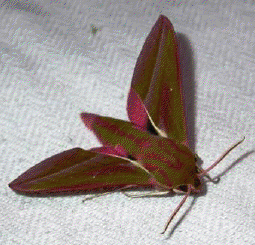
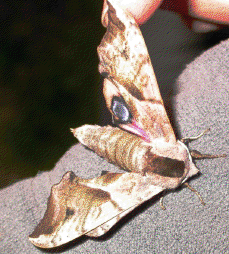
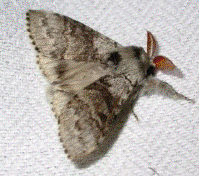

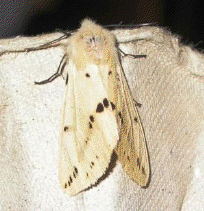
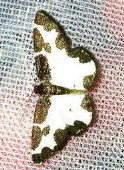
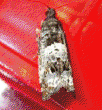


[table id=15 /]
.
A first summer Little Gull rested on the Slurry Lagoon for a short time this afternoon. Three Four-spotted Chasers were seen and two Red-tipped Clearwings were attracted to lures. On the southern, inside bank of the Deep Pit several Burnet Companions were seen. The cygnets were out briefly and a Gadwall with nine new ducklings and a Mallard with four were also on the Slurry Lagoon. RW.
After a cold National Moth Night, where Netherfield Lagoons did very well compared with many venues that only recorded 1 or 2 specimens, I was itching to set the trap up in warmer conditions. The first warm night, namely Wednesday, was brilliant by all accounts. So a quick email and another session was arranged for Friday. Fortunately 4 people picked it up.
We had one light operating and decided to trap between the slurry lagoon and the Deep Pit first ,close to where we caught the Emperor Moth . As it was going dark a large moth drift through the grass and Rob caught it. Yes it was the female Emperor Moth again! As the night when on we were swamped with Caddisfly including a few large Sedge Flies. As it grew darker they were joined by Common Swift, Common Wave and Brown Silverlines. A large Cockchafer flew in and showed its remarkable antennae. As it was becoming difficult to breathe without inhaling midges and caddisfly we decided to move the trap along the western edge of the Deep Pit. At around 10:30 the moths came in, starting Green Carpet, Flame Shoulder, Spectacle and Shuttle-shaped Dart. All species we had previously caught, however new species appeared including a lovely fresh Powdered Quaker and White Spotted Pug all marsh species, Elephant Hawkmoth, a gorgeous Treble-Bar, Bloodvein, Campion, Garden Carpet, Lime-specked Pug.
[table id=14 /]
As it is important to choose the right evenings I will post the nights up on the website a day or two before, so please keep your eyes open. If you don’t have internet access but would like to come let me know your phone number and I will phone you beforehand. You can contact me on 9893197.
Look forward to seeing you there. Craig.
National Moth Night is a yearly event where, all over the UK, people go out and light up the sky and identify the moths in their local area. The date of the National Moth Night varies each year, as does the purpose of the night. Sometimes it targets a specific species during their flight times or a change in general distribution. This year it has been about moths and their predators: bats.
Moths, like butterflies, like to fly in warm and calm conditions. After a chilly weeks weather, Saturday had been reasonably pleasant and warm. We arrived at 8pm and the sky was clearing with a fairly strong breeze. It is always relaxing to watch the sun set to a chorus of Sedge Warblers and Cuckoo. A party of Common Tern came into roost and a Peregrine skimmed through at dusk across the Deep Pit.
We had two lights operating and decided to trap between the Slurry Lagoon and the Deep Pit. One trap on the junction between the track between the two pits and the outer path and the other a little along the track between the two pits. Lights went on about 9:10 and activity was slow at first, although three to four Noctule Bats hunted over the Slurry Lagoon. While I stayed with the equipment the group walked to the River Trent where Daubenton’s Bats and probably Soprano Pipistrelle Bats were feeding.
Before long the first moth appeared, luckily caught as it was just about to disappear. A lovely fresh Waved Umber, whose food-plant is Privet and Lilac. Then came the very variable Shuttle-shaped Dart with Rusty Shoulder Knot. A lovely male Pale Tussock was then followed by a cracking fresh Mullein Moth. This species feeds on Mullein and Figwort. Then came a fresh Green Carpet and the dashingly dark Spectacle, a moth you need to look head on at to see its large two pale disks below a quiff of hairs!
Activity around new Robinson trap had appeared to be quiet but to our delight, sitting just below the bulb was the star moth of the night, a lovely female Emperor Moth, the UK’s largest moth. Although the caterpillars have been found in the past, until now, no one had seen the adult. Camera phones were used to capture this event.
Although only a few yards away the Robinson trap yielded completely new moths. In addition to the Emporer Moth, a stunning male Lime Hawkmoth, a lovely Pebble Prominent and a Flame Shoulder.
At midnight the group made its way home under the stars to the back drop of a reeling a Grasshopper Warbler, all very satisfied at seeing this new aspect of Netherfield Lagoons.
As we have new mothing gear I hope to arrange a number of mothing evenings throughout the year and I hope members and their friends and family will join us. All you need is a torch, warm clothing and seat to sit on. As it’s important to choose the right evenings, I will post the nights up on the website a day or two before, so please keep your eyes open. If you don’t have internet access but would like to come let me know your phone number and I will phone you beforehand. You can contact me on 9893197.
Look forward to seeing you there. Craig Howat.
A Common Sandpiper was seen on the river this evening and three to four Noctules were seen flying over the Slurry Lagoon. In the dusk a Peregrine swooped into the Deep Pit, upsetting the Common Terns, and a Soprano Pipistrelle was identified beside the river. The moth traps attracted about eleven species, which included Emperor, Lime Hawk, Waved Umber, Lesser Swallow Prominent, Pebble Prominent and Mullein. PS.
Seventeen Six-belted Clearwings were attracted to Rob Woodward’s pheromone lure on the Lower Path today. This is another nationally scarce species.
Six Red-tipped Clearwings, Synanthedon formicaeformis, came to Rob Woodwards’ pheromone lure in sallows near the containers.